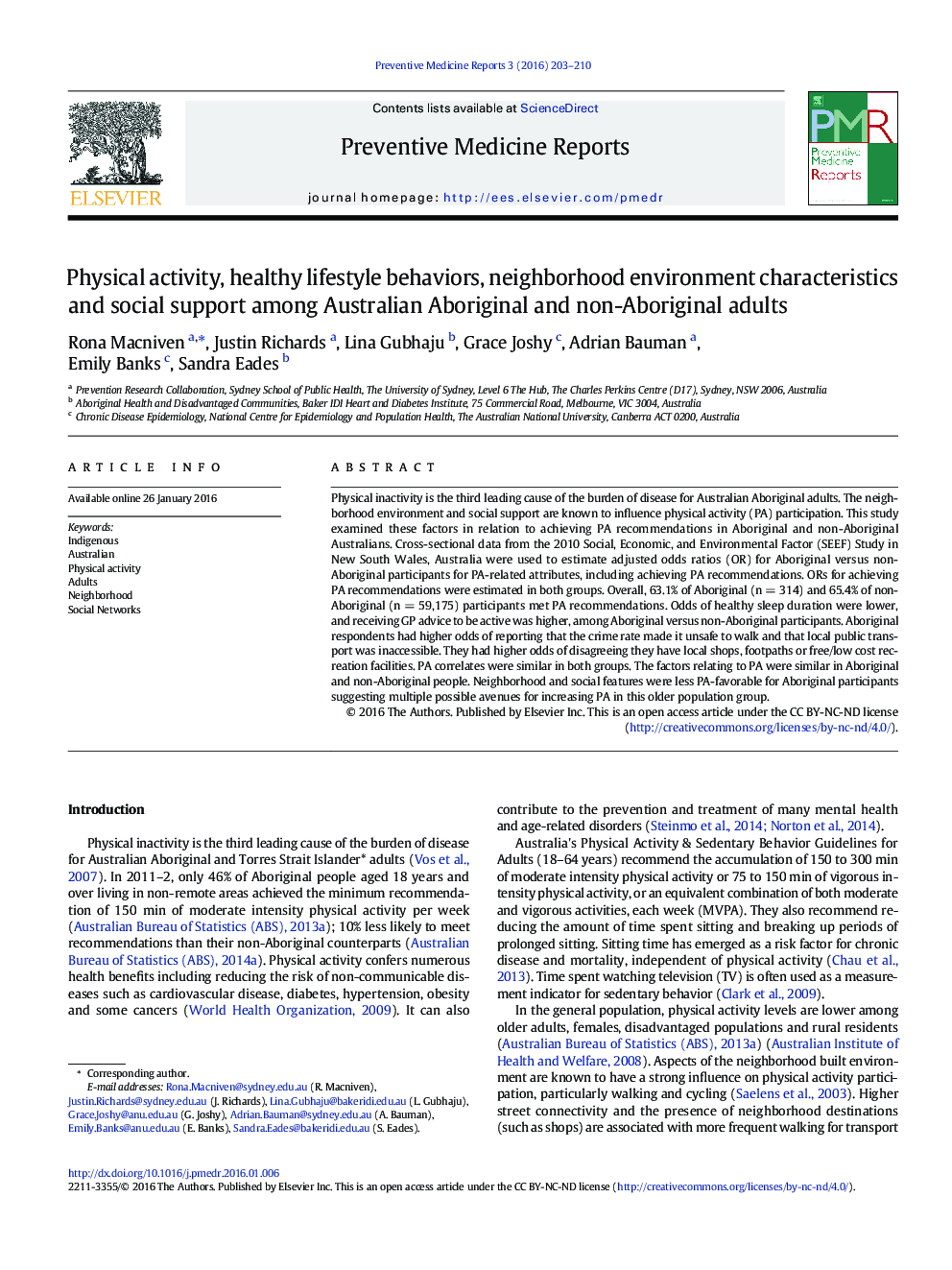| Article ID | Journal | Published Year | Pages | File Type |
|---|---|---|---|---|
| 4202348 | Preventive Medicine Reports | 2016 | 8 Pages |
•Aboriginal people experience unfavorable neighborhoods and reduced social support.•However, Aboriginal people were as likely to be physically active.•Factors associated with physical activity were similar for both groups.
Physical inactivity is the third leading cause of the burden of disease for Australian Aboriginal adults. The neighborhood environment and social support are known to influence physical activity (PA) participation. This study examined these factors in relation to achieving PA recommendations in Aboriginal and non-Aboriginal Australians. Cross-sectional data from the 2010 Social, Economic, and Environmental Factor (SEEF) Study in New South Wales, Australia were used to estimate adjusted odds ratios (OR) for Aboriginal versus non-Aboriginal participants for PA-related attributes, including achieving PA recommendations. ORs for achieving PA recommendations were estimated in both groups. Overall, 63.1% of Aboriginal (n = 314) and 65.4% of non-Aboriginal (n = 59,175) participants met PA recommendations. Odds of healthy sleep duration were lower, and receiving GP advice to be active was higher, among Aboriginal versus non-Aboriginal participants. Aboriginal respondents had higher odds of reporting that the crime rate made it unsafe to walk and that local public transport was inaccessible. They had higher odds of disagreeing they have local shops, footpaths or free/low cost recreation facilities. PA correlates were similar in both groups. The factors relating to PA were similar in Aboriginal and non-Aboriginal people. Neighborhood and social features were less PA-favorable for Aboriginal participants suggesting multiple possible avenues for increasing PA in this older population group.
